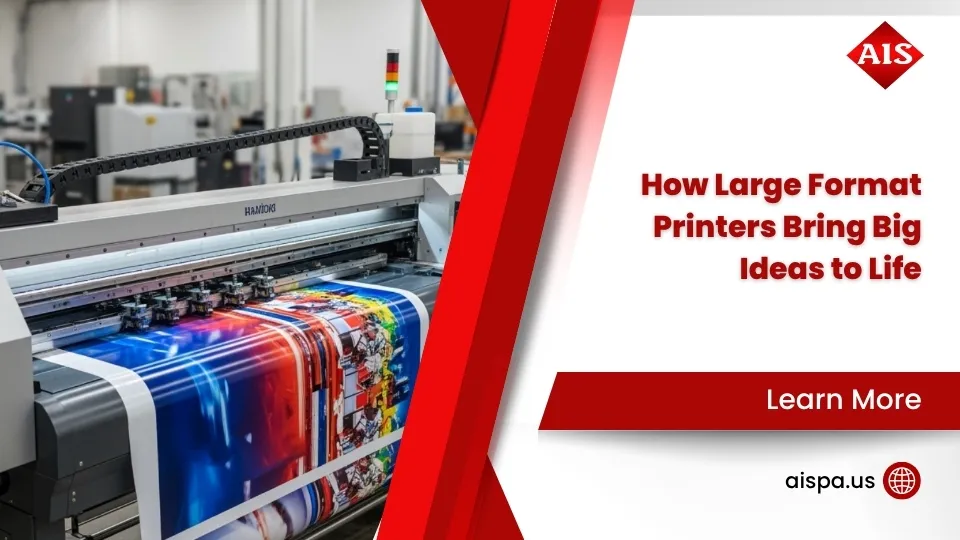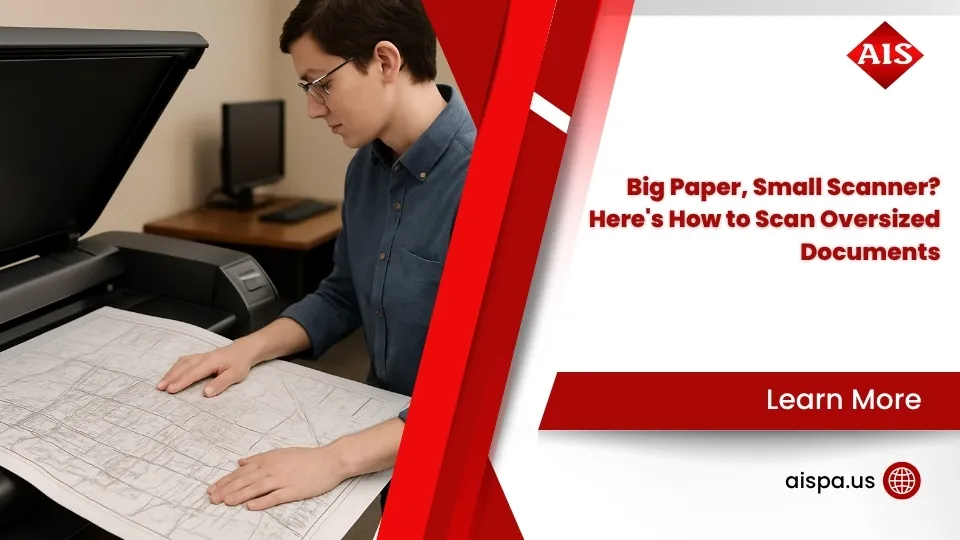The Big Picture: Exploring Computer Paper Sizes
Computer paper size refers to the standard dimensions of sheets used in printers and copiers worldwide. Here’s a quick reference to the most common sizes:
| Name | Dimensions (inches) | Dimensions (mm) | Primary Usage |
|---|---|---|---|
| Letter | 8.5 × 11 | 216 × 279 | Standard in US/Canada |
| A4 | 8.3 × 11.7 | 210 × 297 | International standard |
| Legal | 8.5 × 14 | 216 × 356 | Contracts, legal documents |
| Tabloid/Ledger | 11 × 17 | 279 × 432 | Spreadsheets, newspapers |
| A3 | 11.7 × 16.5 | 297 × 420 | Posters, large documents |
Have you ever printed a document only to find the edges cut off or weird margins appearing? That frustration often stems from mismatched paper size settings. As office equipment evolves, understanding paper sizes remains surprisingly critical to daily operations.
Paper size standardization might seem mundane, but it’s the invisible framework that keeps business documents flowing smoothly across printers, scanners, and digital devices. Without these standards, we’d face printing chaos – odd-shaped pages flapping everywhere and incompatible document formats causing constant headaches.
For Philadelphia businesses managing multiple devices and international communications, knowing the difference between A4 and Letter can prevent costly reprints and ensure professional document presentation.

Computer paper size vocab explained:
Why Paper Size Matters in a Digital World
You might wonder why we still care about computer paper size in our increasingly digital world. Despite predictions of the “paperless office” since the 1970s, the average office worker still uses about 10,000 sheets of paper annually. Physical documents remain essential for legal contracts, official records, marketing materials, and many everyday business functions.
The standardization of paper sizes dates back centuries, but became critical during the computing revolution when printers needed consistent formats to function efficiently. When early computers began connecting to printing devices, manufacturers had to decide which paper standards to support—creating a legacy that affects us to this day.
“Try to imagine if there was no newspaper in the mornings when you woke up, no paper to write letters or print legal documents, and no paper for books to read!” This thought experiment highlights how integral standardized paper remains to our daily lives, even as digital alternatives grow.
Efficiency is another key reason paper sizes matter. Standardized dimensions allow for:
- Predictable printing without wasted margins
- Consistent document storage systems
- Simplified mailing and shipping
- Reduced paper waste and environmental impact
For businesses across Pennsylvania, from Pittsburgh to Philadelphia, printing compatibility issues can waste thousands of dollars annually in reprinted documents, shipping errors, and lost productivity.
Understanding Paper Size Standards
Ever wondered why your printed documents sometimes look strange when shared internationally? The answer lies in the fascinating world of computer paper size standards. What seems like a mundane topic actually reveals a rich mix of mathematical elegance, practical necessity, and even a touch of national pride.
“Without standardized sizing, printing as we know it wouldn’t work,” notes one industry expert. “Forget handouts and paper clips. There’d be mountains of odd-shaped pages flapping all over the place—printing chaos!”

The ISO Framework: A, B & C Series
The ISO 216 standard, established in 1975, is a marvel of practical mathematics. The A-series begins with A0—a sheet measuring exactly one square meter (841 × 1189 mm). Each subsequent size is created by simply folding the previous one in half along its longer dimension.
What makes this system truly brilliant is its consistent 1:√2 aspect ratio (approximately 1:1.414). This magical proportion means an A4 sheet, when folded in half, creates two perfect A5 sheets with identical proportions. This neat solution makes scaling documents between sizes remarkably simple—no content gets awkwardly cropped or resized.
A4 paper (210 × 297 mm or 8.3 × 11.7 inches) dominates office life across Europe, Asia, and most of the world. Its slightly taller, slimmer profile compared to American Letter size gives documents a distinctive international look.
The B-series provides intermediate sizes between A-series sheets, using the geometric mean principle. These slightly larger sheets are perfect for posters, books, and passports. Meanwhile, the C-series is cleverly designed for envelopes—each C-size perfectly accommodates its corresponding A-size document with just enough extra room for easy insertion.
The North American System Explained
While most countries acceptd ISO standards, North America developed its own approach to computer paper size. The familiar Letter size (8.5 × 11 inches) reigns supreme across American offices, with Legal size (8.5 × 14 inches) making regular appearances in courtrooms and law firms.
Unlike the ISO system’s consistent proportions, North American sizes follow a more pragmatic evolution. The ANSI (American National Standards Institute) system includes:
- Letter (ANSI A): 8.5 × 11 inches (216 × 279 mm)
- Legal: 8.5 × 14 inches (216 × 356 mm)
- Tabloid/Ledger (ANSI B): 11 × 17 inches (279 × 432 mm)
- ANSI C through E: progressively larger sizes for engineering drawings
The practical downside? These sizes don’t maintain consistent proportions when scaled, often creating awkward margins or cut-off content when enlarged or reduced.
History of the computer paper size debate
The story behind computer paper size standards reads like a surprising mix of scientific findy, governmental decree, and international relations.
The mathematical concept underpinning ISO paper sizes traces back to 1786, when German physicist Georg Christoph Lichtenberg finded the special properties of a 1:√2 ratio rectangle. This mathematical curiosity remained largely academic until paper shortages following World War I pushed efficiency to the forefront.
In 1922, Dr. Walter Porstmann transformed this concept into the German DIN 476 standard, creating a system where paper could be efficiently cut without waste—a breakthrough that eventually spread worldwide as ISO 216.
Meanwhile, American paper sizes developed along different lines. The familiar 8.5 × 11-inch Letter format likely emerged from early papermaking constraints. Traditional paper molds measured approximately 44 × 17 inches, which could be quartered to create four Letter-sized sheets—a practical solution that became standardized through use rather than mathematical design.
The dawn of computing brought these competing standards into direct conflict. As printers became essential office equipment, manufacturers had to choose default paper sizes—American companies naturally selected Letter, while European and Asian manufacturers favored A4.
Even presidents got involved in the paper debate! In the 1930s, Herbert Hoover championed a slightly smaller “Government-letter” size (8 × 10.5 inches) to save paper and storage space. Decades later, Ronald Reagan’s administration standardized federal paperwork to the now-familiar 8.5 × 11-inch Letter format, cementing its dominance in American offices.
Today, this historical split creates practical challenges for Philadelphia businesses with international connections. At Associated Imaging Solutions, we help local companies steer these cross-border paper differences with printer settings, document formatting, and smart workflow solutions that bridge the gap between global standards.
Key Dimensions & Uses of Popular Sheets
Let’s explore the practical world of computer paper size measurements. Those numbers might seem like mere dimensions, but they shape everything from how we design documents to how our printers behave. I’ve helped countless Philadelphia businesses solve paper-related headaches, and understanding these differences makes all the difference.

Everyday Office Heroes
You know those paper sizes you reach for without even thinking? They’re the unsung heroes of your daily operations.
A4 (210 × 297 mm / 8.3 × 11.7 inches) rules the international paper scene, serving as the go-to standard in more than 200 countries worldwide. It’s a bit taller and narrower than its American cousin. Walk into any office in Europe, Asia, or Australia, and A4 is what you’ll find in their printers, folders, and binders. It’s perfect for business reports, proposals, academic papers, and instruction manuals.
Letter (8.5 × 11 inches / 216 × 279 mm) is North America’s beloved standard – slightly wider and shorter than A4. If you’re running a business in Philadelphia, this is likely your daily driver for internal memos, business letters, invoices, and marketing materials. The subtle difference between Letter and A4 might seem trivial until you try to file A4 documents in Letter-sized folders!
Legal (8.5 × 14 inches / 216 × 356 mm) gives you that extra breathing room when standard Letter just won’t cut it. With the same width but three inches of additional length, Legal paper provides valuable space for contracts, legal documents, and detailed financial spreadsheets. Many of our Philadelphia law firm clients couldn’t function without it.
Most everyday paper comes in 20 lb (75 gsm) weight, though stepping up to 24 lb (90 gsm) gives you better durability and less show-through when printing double-sided. One of our clients recently finded this the hard way when important financial documents showed shadowy numbers on both sides during a key presentation!
Wondering about the subtle differences between types of office paper? Check our guide on Copy Paper vs Printer Paper for the full scoop.
Large-Format & Creative Sheets
When big ideas need bigger paper, these formats come to the rescue.
A3 (297 × 420 mm / 11.7 × 16.5 inches) is exactly twice the size of A4 while keeping those same magical proportions. It’s the darling of architects, designers, and anyone needing to spread out their ideas. We’ve helped many Philadelphia marketing agencies set up their printers to handle A3 for eye-catching posters, detailed spreadsheets, and folded brochures.
Tabloid/Ledger (11 × 17 inches / 279 × 432 mm) is North America’s answer to A3, though with slightly different dimensions. Newspapers, newsletters, and engineering drawings all find a home on Tabloid paper. When folded in half, it creates an attractive booklet format that many of our clients use for high-impact marketing materials.
A2 (420 × 594 mm / 16.5 × 23.4 inches) doubles down again, offering twice the real estate of A3. This size shines for architectural plans, engineering drawings, and posters that need to make a statement from across the room. We recently helped a Philadelphia engineering firm configure their wide-format printer to handle A2 drawings with perfect precision.
ANSI C (17 × 22 inches / 432 × 559 mm) steps up from Tabloid in the North American system, providing ample space for construction plans, technical drawings, and detailed maps. The non-standard proportions can sometimes create challenges when scaling, but our technicians at Associated Imaging Solutions can help configure your equipment for perfect results.
For creative projects that need to make a visual impact, paper choice matters just as much as the design itself. Learn more about specialty options in our guide to Types of Paper for Printing.
Specialty Cuts & Half Sizes
Sometimes standard just won’t do – that’s where these specialty formats shine.
Executive (7 × 10.5 inches / 178 × 267 mm) sits in that sweet spot between personal stationery and full business size. It carries a certain gravitas that makes it perfect for personal correspondence, executive stationery, and compact reports. One Philadelphia CEO we work with insists on Executive-sized notepads for all boardroom meetings – sometimes size really does signal importance!
Half Letter (5.5 × 8.5 inches / 140 × 216 mm) is exactly what it sounds like – a Letter sheet cut in half. This versatile size works beautifully for small booklets, greeting cards, invitations, and compact manuals. We’ve helped several local businesses create customer-friendly instruction booklets using this handy format.
A5 (148 × 210 mm / 5.8 × 8.3 inches) follows the ISO system’s neat logic as exactly half an A4 sheet. Notebooks, journals, small booklets, and appointment cards all benefit from this portable yet substantial size. Many of our clients use A5 for menus, program booklets, and informational handouts.
RA and SRA Sizes might sound mysterious, but they’re simply “raw” versions of standard sizes with extra margin for professional printing. Think of them as the paper equivalent of buying pants a size larger to allow for shrinkage! RA3 (305 × 430 mm) gives you about 5% extra around A3, while SRA3 (320 × 450 mm) provides a generous 15% margin. These untrimmed sizes are essential when you need images or colors to extend right to the edge of the final page.
For businesses with unique paper needs, our guide to Types of Hard Paper for Printing explores specialty options that stand up to demanding applications.
Here in Philadelphia, we’ve seen how the right paper size can make or break a project. Whether you’re creating legal documents, marketing materials, or architectural plans, understanding these dimensions helps ensure your ideas come across exactly as intended – no unexpected cropping or scaling required!
Converting and Printing Across Standards

Have you ever printed a beautiful document only to find the bottom chopped off or strange margins appearing out of nowhere? You’re not alone! One of the most common headaches businesses face is printing documents formatted for one paper standard on equipment configured for another.
This cross-standard printing often feels like trying to fit a square peg in a slightly different square hole. The culprit? Different aspect ratios. ISO A-series papers maintain that neat 1:√2 ratio we discussed earlier, while North American sizes use various proportions. This fundamental difference means content designed for one system won’t perfectly fit the other without some clever adjustments.

From A4 to Letter Without Tears
When printing A4-formatted documents on Letter paper (or vice versa), a few simple tricks can save your sanity:
The magic number for converting A4 to Letter is 94%. Since A4 is about 6% taller and 3% narrower than Letter, scaling your document to 94% ensures all content fits properly without anything getting cut off.
“We were constantly fighting with European client documents losing content at the margins,” a Philadelphia law firm told us after seeking help. “That simple 94% adjustment eliminated all our problems overnight.”
Going the other direction? When printing Letter-formatted documents on A4 paper, the 97% solution works beautifully. This slight reduction ensures your content fits perfectly on the taller, narrower A4 sheet.
Most modern printers offer several helpful options for handling these conversions:
- The “Fit to page” option automatically scales the document to match whatever paper you’ve loaded
- “Actual size” maintains original dimensions (beware—this might clip content!)
- Manual scaling lets you input precise percentages (our magical 94% or 97%)
- Some printers even include special A4/Letter conversion presets in their “Paper handling” menu
For Philadelphia businesses working with international partners, we recommend setting up default scaling options on your networked printers. This simple step prevents costly reprints and those embarrassing “sorry about the formatting” emails.
Printing Tabloid on A3 Devices
The relationship between Tabloid (11 × 17 inches) and A3 (11.7 × 16.5 inches) creates similar challenges on a larger scale. A3 is slightly taller and narrower than Tabloid—a small difference that can cause big headaches with important documents.
Double-sided printing makes these differences even more noticeable. Without proper scaling, content may shift between front and back sides, creating that unprofessional “amateur hour” look. For important presentations and client-facing materials, remember these adjustments:
Use “fit to page” for hassle-free automatic scaling, or set manual scaling to 97% when printing Tabloid content on A3. Going the other way? Use 95% when printing A3 content on Tabloid.
Creating booklets or multi-page layouts adds another layer of complexity. Professional-grade printers allow for custom imposition settings—the arrangement of pages on a sheet—to accommodate different paper standards.
Many of our Philadelphia clients use imposition to print two Letter-sized pages side-by-side on Tabloid sheets, or two A4 pages on A3, creating professional-looking booklets after folding and binding. It’s like getting two pages for the price of one!
Envelope Matching & Folding Hacks
The dance between paper and envelope sizes is another area where standards make a big difference. The ISO C-series was brilliantly designed specifically to accommodate folded A-series documents.
If you work with A4 paper, these envelope pairings will make your life easier:
- C4 envelopes (324 × 229 mm) fit unfolded A4 sheets perfectly
- C5 envelopes (229 × 162 mm) accommodate A4 folded once
- C6 envelopes (162 × 114 mm) fit A4 folded twice
- DL envelopes (220 × 110 mm) hold A4 folded in thirds (the standard for business letters)
In North America, the common pairings include:
- Commercial #10 envelopes (9.5 × 4.125 inches) for Letter paper folded in thirds
- 6 × 9 envelopes for Letter folded in half
- 9 × 12 envelopes for unfolded Letter sheets
The way you fold paper affects both its final dimensions and professional appearance. A single fold creates a booklet-style document, while a tri-fold (or letter fold) creates a document with three panels—perfect for brochures. The Z-fold is an alternative that unfolds like an accordion, and the dramatic gate fold has outside panels that fold inward to meet in the center, creating an impressive reveal when opened.
Mastering these folding techniques can lift your printed materials from ordinary to memorable. For more insights on optimizing your document presentation, check out our guide on Choose Right Printer Paper Types.
At Associated Imaging Solutions, we’ve helped countless Philadelphia businesses solve their paper puzzles. Whether you’re sending documents internationally or creating marketing materials that need to impress, understanding these computer paper size conversions saves time, money, and professional reputation.
Choosing the Right Computer Paper Size
Picking the perfect computer paper size isn’t just about following what everyone else uses. It’s about making smart choices that help your documents look better, save you money, and make your life easier.
Here at Associated Imaging Solutions, we’ve helped countless Pennsylvania businesses make paper decisions based on what really matters:
When you’re deciding which size to use, think about why you’re creating the document in the first place. Are you sending a formal business proposal? Standard Letter or A4 is probably your best bet. Creating eye-catching marketing materials? You might want to go larger for more visual impact. Just printing something for internal use? Consider smaller sizes to save resources.
What’s going on your page matters too. If you’ve got tons of text, you’ll need adequate margins so people can actually read it without getting a headache. Visual presentations often look better in wider formats that give your images room to breathe. And if you’re dealing with complex spreadsheets or data, larger sheets can prevent your information from feeling cramped.
“We had a client who kept printing financial reports on Letter paper,” shares one of our Philadelphia print specialists. “They were constantly squinting at tiny numbers. When we switched them to Tabloid sheets folded in half, suddenly everything was readable and their quarterly meetings became much more productive!”
Consider how your document will be handled after printing. Will you mail it? Make sure it fits standard envelopes to avoid extra postage. Need to file it? Match your existing storage systems so it doesn’t stick out awkwardly. Planning to bind it? Don’t forget to account for those binding margins, or you’ll lose content in the spine.
Distribution context matters enormously too. If you’re sending documents internationally, ISO standards like A4 make more sense. Staying domestic? Follow regional norms like Letter size. And if you’re distributing digitally but expect people might print, consider formats that work well on common screens but also print cleanly.
A Philadelphia architecture firm we support has developed a smart system – they use A3/Tabloid for impressive client presentations but stick with A4/Letter for contracts and correspondence. This creates consistency across their international projects while optimizing for each document’s purpose.
Want more guidance on selecting the perfect paper for your specific needs? Check out our guide on Best Printer Paper for Quality and Sustainability.
Environmental impact of your computer paper size choice
Your paper choices leave a bigger environmental footprint than you might realize. Smart sizing isn’t just good business—it’s good stewardship.
Right-sizing documents from the start minimizes trimming waste. When you design for standard sizes, you improve compatibility and reduce those frustrating reprints that waste both paper and time. And don’t overlook duplex printing—it’s a simple change that can slash your paper consumption by up to 50%.
Look for that little tree logo on packaging that indicates Forest Stewardship Council (FSC) certification. It’s your assurance that the paper comes from responsibly managed forests that provide environmental, social and economic benefits.
Paper weight matters too. Standard 20 lb (75 gsm) paper works perfectly well for most everyday uses. Save those heavier stocks (24-32 lb) for special applications where durability counts. For internal documents that won’t leave the office, consider lightweight papers (16-18 lb) to reduce resource use.
Recycling becomes easier when you stick with standard sizes, as recycling systems process them more efficiently. Try to avoid specialty coatings that make recycling difficult, and establish clear office protocols so everyone knows exactly what paper goes where.
One of our Philadelphia clients implemented these practices and saw remarkable results—a 22% reduction in paper consumption just by optimizing document sizes and setting up smart duplex printing policies. That’s good for both the planet and their bottom line.
Industry-Specific Recommendations
Different industries have unique document needs that influence which paper sizes work best:
Legal firms typically rely on Legal size (8.5 × 14 inches) for contracts and pleadings, while using Letter size for day-to-day correspondence. Tabloid size shines for complex exhibits and timelines where detail matters. Many of our legal clients also invest in pre-printed letterhead on premium stock for client communications.
For architectural and engineering firms, size really matters. A1/ANSI D formats provide the space needed for large-scale drawings, while A3/Tabloid works well for reduced-scale plans and presentations. A4/Letter is the go-to for specifications and documentation. We often recommend specialized plotting papers for technical drawings that need precise lines and durability.
Marketing and creative agencies need flexibility. A5/Half Letter makes perfect sense for handy flyers and handouts, while A4/Letter looks professional for proposals and reports. A3/Tabloid creates impressive presentation boards that command attention. Many creative professionals also explore specialty finishes for materials that clients will handle directly.
Healthcare providers juggle multiple paper needs. Letter/A4 works well for patient records, while Half Letter/A5 is perfect for prescription pads and appointment cards. Legal size provides the extra space needed for detailed medical history forms. And of course, HIPAA compliance must be considered in both paper selection and disposal practices.
Educational institutions typically use A4/Letter for syllabi and handouts, A3/Tabloid for posters and announcements around campus, and A5/Half Letter for quizzes and shorter assignments. Many schools and universities also prioritize recycled content as part of broader sustainability initiatives.
Our team at Associated Imaging Solutions provides customized recommendations for Philadelphia businesses based on your unique document workflows. We understand that industry standards matter, but so do your specific needs and processes.
For more detailed information on selecting paper for specific industries, take a look at our guide on Paper Types for Printing.
Frequently Asked Questions about Computer Paper Size
What is the difference between A4 and Letter?
Confused about computer paper size differences? You’re not alone! The A4 versus Letter debate is something we encounter daily with our Philadelphia clients.
A4 and Letter might look similar at first glance, but they have some meaningful differences that can cause printing headaches:
- Dimensions: A4 measures 210 × 297 mm (8.3 × 11.7 inches), while Letter is slightly wider but shorter at 8.5 × 11 inches (216 × 279 mm)
- Aspect Ratio: A4 follows that neat 1:√2 ratio we discussed earlier, while Letter has a ratio of approximately 1:1.29
- Geographic Usage: A4 is the global standard in most countries, while Letter is primarily used in the United States and Canada
- Origin: A4 comes from that clever mathematical principle of halving a 1 m² sheet, while Letter evolved more organically from early American papermaking traditions
What does this mean in practice? When you print an A4 document on Letter paper without adjustments, you might lose the bottom portion of your content or end up with uneven margins. Not exactly the professional look you’re aiming for!
How do I print an A4 PDF on US Letter without clipping?
“I need to print this European contract, but it keeps cutting off the signature line!” This is something we hear regularly from our Philadelphia business clients. Thankfully, there’s a simple fix.
When you’re printing A4-formatted PDFs on Letter paper, follow these steps:
- Open your print dialog and look for “Page Scaling” or “Size Options”
- Select “Fit to Printable Area” or “Fit to Page” to automatically adjust everything
- If those options aren’t available, try setting a custom scale of 94% – this magic number maintains proportions perfectly
- Use the “Preview” function if available to check that everything fits nicely
- For documents where precision matters (like legal contracts), consider adjusting margins in the original document before printing
One of our law firm clients in Center City had constant issues with European client documents until we created a dedicated printer preset named “A4 to Letter” with these settings pre-configured. Their staff now simply selects this option when printing international documents, saving time and eliminating frustration.
Which envelope fits an A4 sheet folded twice?
Matching papers to envelopes shouldn’t require an engineering degree, but it sometimes feels that way! When you fold an A4 sheet twice (into quarters), you end up with dimensions of approximately 105 × 148.5 mm.
For this folded size, your best envelope options are:
C6 envelope (114 × 162 mm) is your perfect match. It provides just enough room without excessive space that makes your document shift around. This is the standard international option designed specifically for A4 folded twice.
DL envelope (110 × 220 mm) works well if you fold your A4 sheet differently – specifically in thirds rather than quarters. This creates a longer, narrower package that’s perfect for business correspondence.
#6¾ envelope (3.625 × 6.5 inches or 92 × 165 mm) is the North American alternative that provides a slightly tighter fit but works in a pinch.
We’ve helped many Philadelphia businesses streamline their mailing operations by stocking both North American and ISO standard envelopes. This simple step ensures your correspondence looks professional whether you’re sending documents across town or across the Atlantic.
The entire C-series of envelopes was specifically engineered to perfectly accommodate folded A-series papers – it’s one of those thoughtful design details that makes the ISO system so neat when you need to mail your documents.
Conclusion
Understanding computer paper size standards might seem like a minor detail in business operations, but as we’ve explored, it affects everything from document presentation to printing costs and international compatibility.
The paper size puzzle impacts your business more than you might realize. When your marketing materials look professional, your legal documents fit properly in standard folders, and your international correspondence arrives without awkward margins, you’re leveraging the invisible power of proper paper standardization.
For Pennsylvania businesses navigating these paper puzzles, Associated Imaging Solutions provides expert guidance and managed print services that optimize your document workflows. Our local expertise combined with global standards knowledge helps organizations across Philadelphia, Pittsburgh, and beyond create efficient, professional, and sustainable document systems.
We’ve seen how small adjustments to paper handling can make big differences. One Philadelphia law firm eliminated client complaints about document presentation simply by implementing proper A4-to-Letter conversion settings. A local architectural firm reduced paper waste by 15% by standardizing their large-format printing processes.
Whether you’re printing architectural plans on A1 sheets, preparing legal contracts on Legal size, or simply trying to ensure your international correspondence maintains a professional appearance, the right paper size choices make a significant difference. The humble sheet of paper remains a critical business tool even in our increasingly digital world.
As paper and digital workflows continue to evolve, having a trusted partner who understands both the technical specifications and practical applications of different paper standards becomes increasingly valuable. We’re proud to serve as that partner for businesses throughout Pennsylvania.
The next time you hear a printer jam or notice text unexpectedly cut off on a printed page, it might not be the technology failing—it could simply be a paper size mismatch that’s easy to fix with the right knowledge.
Ready to optimize your document management systems? Explore our copier & printer solutions or contact our team to discuss your specific paper handling needs. From equipment configuration to sustainable printing practices, we’ll help you master the seemingly simple but surprisingly complex world of computer paper sizes.











